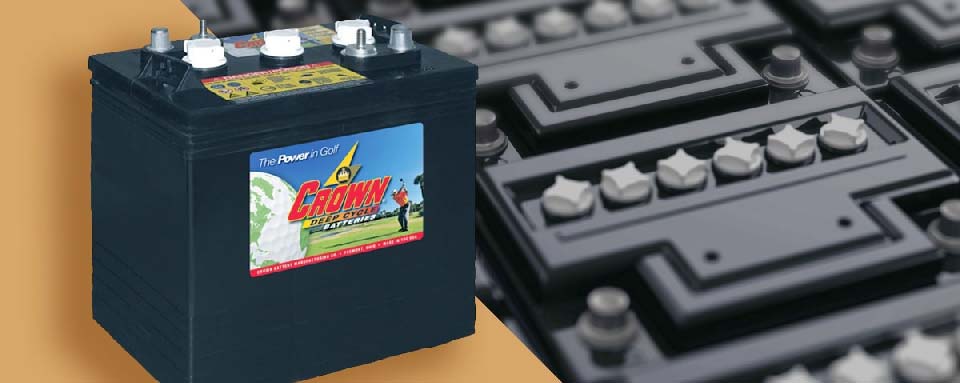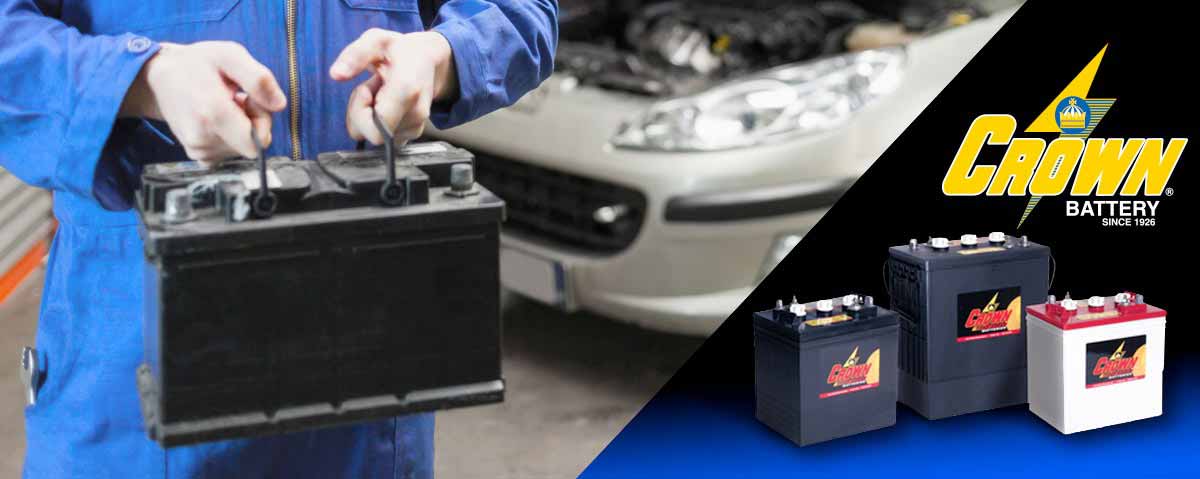Store batteries wrong, and they’ll die early – or leave you stranded on the golf course. But follow the strategies in this blog post, and spring startup will be easy and hassle-free.
You don’t want the golf season to end if you're like us. But unless you move somewhere with warm temperatures year-round (not Ohio, where we’re based), you’ll need to store your batteries and prep them for the off-season.
The problem? Cold weather storage – especially below 32°F (0°C) – increases batteries’ internal resistance and reduces usable capacity. If you aren’t careful, off-season storage can even kill batteries early.
Today, you’ll learn the straightforward way to store golf batteries, including:
- Starting with a strong foundation: Five battery selection tips for easier storage and enhanced durability
- How to monitor batteries remotely – and how to determine whether it makes sense for you
- Exact steps to get batteries ready for storage
- Why routine inspection matters and what to expect
- And more
Start with a strong foundation: Select the right golf cart batteries for durability and easier storage
Solid engineering and manufacturing are critical to batteries performing well on the course and surviving the off-season without damage. Good batteries will make your off-season prep easier and save you money by lasting longer.
Even batteries with identical spec sheets can have vast differences in raw materials, design and field testing, and assembly – affecting whether your batteries make it through the off-season.
Look for modern manufacturing processes like robotic assembly that enhance battery longevity and quality while minimizing upkeep.
For example, Crown Battery uses a proprietary Cast-On-Strap (COS) technology for 3,940 more adjustments than conventional welding. This added precision slashes failure rates for batteries because every weld is consistent. It also reduces scrap (raw materials wasted during production), making batteries more sustainable and valuable.
More testing in the factory = fewer problems on the course (and in storage). For instance, every Crown battery goes through a 250+ point inspection process, including computer-assisted testing and multiple quality checkpoints where trained technicians ensure that batteries meet or exceed our engineers’ specifications. We also monitor and field-test a fleet of thousands of batteries worldwide – from golf courses in the Midwest to grueling mining operations and off-grid homes in the desert. That’s how we can analyze hundreds of thousands of data points, tear down batteries, and continuously improve our designs.
Battery chemistry also plays a vital role in storage requirements. Suppose you store recyclable lead acid or absorbent glass mat (AGM) batteries in freezing or outside exposed elements. In that case, the electrolyte can freeze – possibly damaging or ruining the battery. Lithium-ion (Li-ion) batteries can also undergo changes that render them unusable.
Although AGM and Li-ion batteries are near-zero maintenance and don’t require watering, you’ll still need to inspect them regularly. (Keep reading to see how.)
Know your batteries: Battery Management Systems (BMS)
The earlier you know about a problem, the cheaper and easier you can fix it.
And that’s where BMS can help.
BMS is a computer with one or more sensors showing your batteries' real-time health. It can monitor ambient and internal battery temperatures and alert users if temperatures fall below advised limits.
Other monitors may include total and individual cell voltage, depth of discharge, and charge/usage history. Some BMS models even offer Internet-based battery health dashboards or push notifications for your cell phone.
BMS is a safety requirement for lithium-ion batteries to reduce the risk of thermal runaway, which can lead to fires or explosions. By contrast, you may not need BMS for FLA and AGM batteries. But it can help improve longevity. Your golf cart and battery distributor can help determine whether this makes sense for your operations.
How do you get batteries ready for storage?
First, charge batteries according to manufacturer guidelines. For FLA and AGM batteries, charge to 100% before storage; monitor batteries periodically and ensure they stay at or above 70% State of Charge (SOC). Li-ion batteries typically store best at 40%-50% SOC.
Second, detach the negative cable unless you’re trickle-charging. You’ll want to remove any jewelry, watches, or electronics beforehand for safety. Disconnecting the negative cable is important because if your battery stays connected to your golf cart, “phantom” loads – constant power drains like onboard electronics – can self-discharge and harm batteries during storage.
Third, let a few hours pass before assessing specific gravity or voltage levels. For FLA batteries, use a hydrometer to evaluate each cell; the specific gravity should range between 1.265 and 1.285. Alternatively (and for other battery chemistries), test batteries with a voltmeter; your battery provider will provide a chart explaining how to do this and what readings to expect.
Fourth, select a dry, cool storage location to house batteries during the off-season:
- Temperature: Typically, storage temperature should hover around 60°F (15°C), although your battery manual will lay out acceptable temperature ranges and other considerations.
- Location: Never place batteries directly on the ground. The ground will conduct colder temperatures, and that could damage the battery. Only store batteries inside; too much temperature fluctuation and exposure to the elements will slash battery life and performance.
- Ventilation: Be sure batteries have recommended ventilation. If you’re planning to trickle-charge batteries, place them inside properly ventilated storage boxes at least ½-inch (1.25 cm) apart.
Schedule routine inspections – even for “no-maintenance” batteries
Even batteries labeled as low- or “no-maintenance” need periodic check-ups for optimal functioning – and to catch problems early. Your battery manual should provide detailed inspection and upkeep timelines.
Depending on battery type, regular maintenance may include cleaning battery connectors, inspecting fluid levels, replenishing with distilled water, and monitoring cell voltage.
Lead-acid batteries may benefit from an equalization process (deliberate overcharging) to eradicate sulfation from battery plates and to ensure cells are equally strong.
Lithium-ion batteries can transfer energy from cells with a higher charge to cells with a lower charge. Always check with your manual or manufacturer regarding best practices.
Next:
Now that you know how to store golf cart batteries, you’re ready for an easy shutdown and a hassle-free spring startup next year.
We’re looking forward to seeing you on the links next year. In the meantime, be sure to check out our “Battery Maintenance Made Easy” blog post to save time on your battery inspections.











